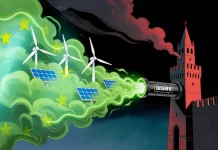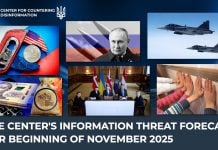By EUvsDisinfo
Russia’s war against Ukraine started in 2014 with the invasion and illegal annexation of Crimea. Russia engineered the war in Eastern Ukraine and later annexed parts of Donbas and other regions in South-east Ukraine against international laws. Soon, 4 000 days will have passed. Russia started the full-scale invasion on 24 February 2022, having fabricated a casus belli. The largest war in Europe since World War II has now lasted 1 000 days and counting.
War in all domains
It is a war in all domains with indiscriminate attacks on civilian targets and the destruction of entire cities, ports, transport and energy infrastructure, hospitals, and residential areas, with countless dead and wounded. Around 16 million civilians were driven into refuge or displaced in the war’s first year. Russia has attacked agricultural land in Ukraine, merchant ships, and tried to block the Black Sea.
Russia has conducted cyber-attacks against the economy in Ukraine and tried to mislead African and other countries about the conflict. Russia has also weaponised energy, reducing and cutting gas exports since the spring of 2022 in an attempt to force the lifting of sanctions.
What can be weaponised has been weaponised.
Deconstructing Russian propaganda in three overall themes
In a series of 10 upcoming articles, we will analyse how Moscow’s campaigns of myth and deception accelerated from 2014 onwards with more false claims.
We identify three themes. First, we show how the Russian state and pro-Kremlin ecosystem prepared the ground for battle. Second, we document how it tried to dominate the information space. Finally, we describe how manipulation and propaganda have become weapons like bullets and guns.
First theme: prepare the ground for battle
The manipulation of information – domestically and globally – has been instrumental to laying the groundwork for the invasion. And the Kremlin has played the long game. For over a decade, Putin and Russian leaders sought to question and dismiss Ukraine’s sovereignty and legitimacy and deny its right to exist as an independent state. In parallel, the Russian government and its pocket academics sought to rewrite history to suit the present. Finally, Russian state outlets dehumanised Ukrainians and fuelled violence and brutality with terrifying consequences.
Second theme: attempts to dominate the information space
Censorship is a form of information manipulation. Those who dare to speak truth to power must be silenced. Russia has not only unleased an unprecedented campaign of domestic censorship. It has adopted repressive laws and removed physical infrastructure like antennas and transmitters in occupied areas of Ukraine. In the meantime, the cult of personality around Putin has contributed to the war, while a revamping of Russia’s education system and culture is brainwashing domestic audiences.
Third theme: manipulation and disinformation as a weapon
Finally, the Kremlin has weaponised narratives about food, agriculture, and energy and directed them toward global audiences. Russia used disinformation to flood information spaces and hide atrocities, war crimes and large-scale child deportation programmes from Ukraine.
To attack our society resilience and defences, it adopted new trends in identity manipulation and online behaviour like doppelganger impersonations and identity hijacking to destroy the notion of what is true and false.
In parallel, Moscow used nuclear sabre rattling and disinformation about chemical and biological topics to spread fear, panic and defeatism, while Russian leaders have tried to appropriate and own the peace narrative.
Moscow’s goal is to confuse global audiences about who is the attacker and who is the attacked.
Stay tuned and don’t be deceived!
By EUvsDisinfo





